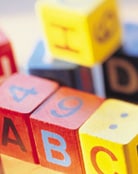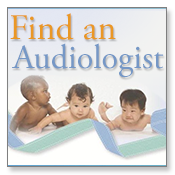Building Languages

How can I start communicating with my baby right now?
It’s never too early to start thinking about helping your baby learn language. Without extra help, children with hearing loss have problems learning language. These children can then be at risk for other delays.
Families who have children with hearing loss often need to learn special skills to help their children learn language. These skills can be used together with cochlear implants, and other devices that help children hear.
Many parents look for help in learning to use these special skills. There are several programs that can help parents and children, each emphasizing different language learning skills. Here are the five programs, and the skills that are sometimes included in each of them:
Auditory-Oral: The auditory-oral program teaches babies and young children who are deaf or hard-of-hearing to use whatever hearing they have. They also use lipreading (speechreading) and gestures to understand and use spoken language. This program includes building blocks such as Natural Gestures, Listening, Speech (Lip) Reading, and Speech.
Auditory-Verbal: The auditory-verbal program teaches babies and young children who are deaf or hard of hearing to use their amplified residual hearing or hearing through electrical stimulation (cochlear implants) to listen, to understand spoken language, and to speak. This program includes building blocks such as Listening and Speech.
Bilingual: This program teaches babies and young children who are deaf or hard of hearing two languages, American Sign Language (ASL) and the family’s native language. (for example, English or Spanish). ASL is usually taught as the child’s first language and English (or the family’s native language) is taught as the child’s second language through reading, writing, speech, and use of residual hearing. This program also teaches respect for Deaf and hearing cultures. This program also includes building blocks such as Finger Spelling and Natural Gestures.
Cued Speech (Building Block): Cued Speech (sometimes called “cueing”) is a building block that helps children who are deaf or hard-of-hearing better understand spoken languages. Many speech sounds look the same on the face even though the sounds are different. For instance, the words “mat”, “bat”, and “pat” look the same on the lips and mouth. When “cueing” English, the person communicating uses eight hand shapes and four places near the mouth to help the person looking tell the difference between speech sounds.
Total Communication: The Total Communication program teaches babies and young children that are deaf or hard-of-hearing to use a combination of building blocks to communicate in the English language. Most Total Communication programs use some form of Simultaneous Communication (speaking and signing at the same time). This program includes building blocks such as Conceptually Accurate Signed English (CASE), Finger Spelling, Listening, Manually Coded English (MCE), Natural Gestures, Speech (Lip) Reading, and Speech.
When most people hear the word “language” they think of languages such as English, Spanish, or other spoken languages. However, there are other languages such as American Sign Language (ASL), which are visual languages. Because you might not be familiar with these languages, there is a section about ASL in this Guide.
You will need to choose which language (or languages) and which building blocks you want for your child.
These five programs use a mixture of different approaches and skills.
You as a parent can look at these programs and choose the skill — or set of skills — that will help your child communicate. Some parents choose a single program because that’s what works best for them. Other parents choose skills from two or more programs because that’s what works best for them. You can also talk to your team of health care professionals about which program or programs will give your child the most success.
Because these skills are used to build language, we are going to call them” building blocks”. Learning language is like stacking building blocks on a platform. The language is the platform and the skills are the building blocks. A family can pick and choose the building blocks that work best for their child and family.
“Building Blocks” refers to the different skills that parents can use to help their child learn language. There are many types of building blocks, and a family can pick and choose the building block (or blocks) that work best for their child and family. The following is a list of many commonly used building blocks.
